Providence keeps flooding. Could green infrastructure be the answer?
PROVIDENCE - On the Fourth of July, as rains turned Providence roads into rivers, Sydney Hunt's landlords rang. It was a call no renter wants to get.
"They were like, 'I don't want to ruin your vacation, but the basement is flooding,'" Hunt recalled. "'We tried to pick up everything of yours that seemed important.'"
Hunt was away with her fiancée in North Carolina visiting family who were welcoming a new baby. While Hunt didn't have much in the basement of her Pleasant Valley Parkway apartment, she had stashed baby shower gifts there, including a new crib, which was unsalvageable.
You might have seen Hunt's partner's car on the news. The little red Oldsmobile Alero was drowning in rainwater that had crept up to the dashboard.
The Department of Public Works has since worked to reduce risks, digging nearly 112 tons of sediment out of the Pleasant Valley Stream and clearing out viaducts. But torrential rains and flash floods are becoming the new norm in Providence as climate change tightens its grip on the world.
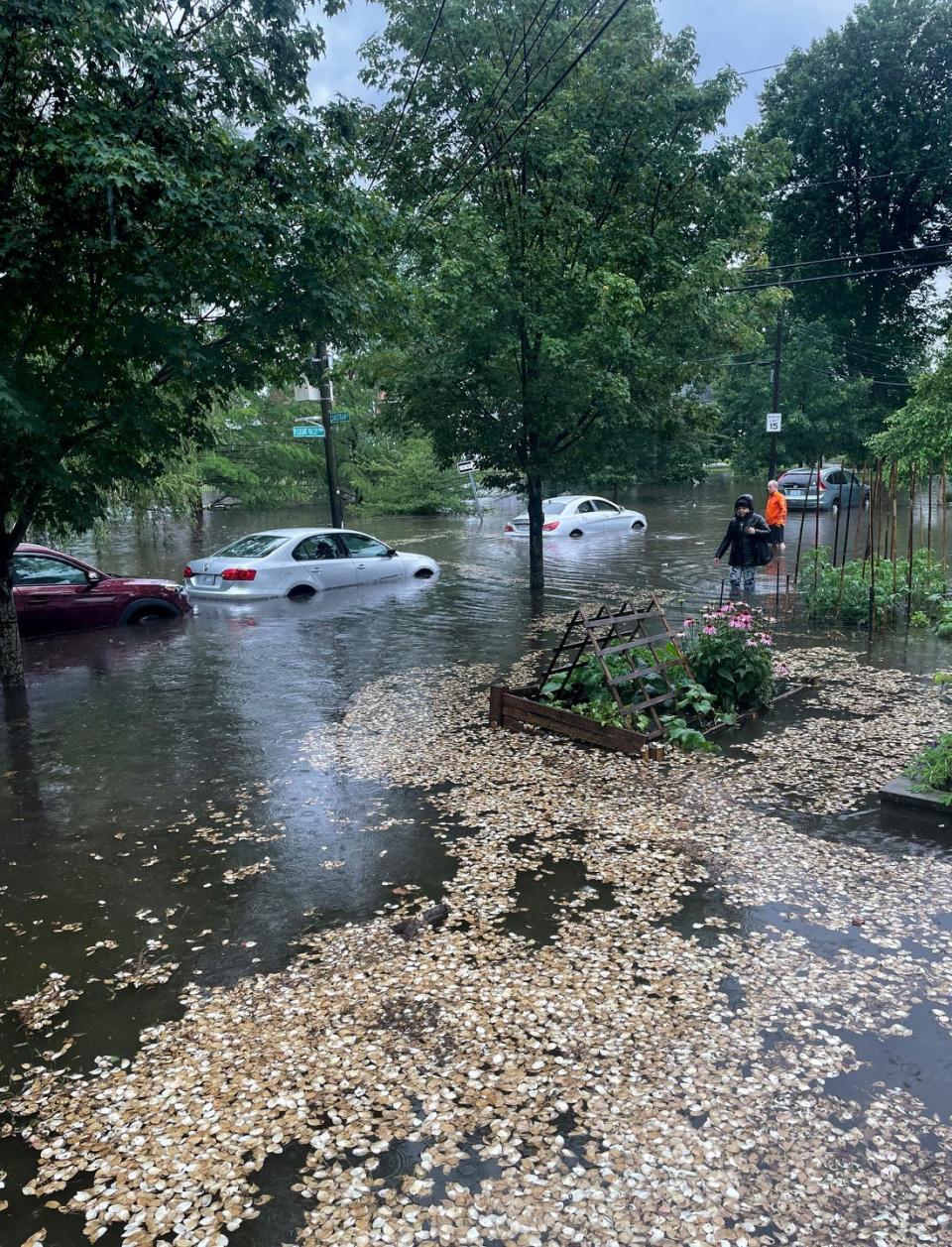
What's 'green infrastructure'? And is it enough to stop floods?
While others hunker down during intense storms, Ryan Kopp, director of Providence's Stormwater Innovation Center, goes out in his car. He roams the city through downpours, filming so-called "green infrastructure" to make sure it's working properly. That's a hot term in the conversation on global warming. In the context of flooding, it means doing things like planting more vegetation to absorb rainwater, or using porous pavement that will stop water from pooling.
Think of a gallon of water being poured quickly into a funnel. The only way to prevent that funnel from overflowing is to make more room for the water to drain. One way to create a larger drain is with green infrastructure.
More: Giant RI sewer project is cleaning Narragansett Bay. But is it too costly for ratepayers?
While these solutions are part of the answer to more frequent extreme weather, Kopp has found a tough reality in his research.
"As I'm driving around Providence trying to capture these videos, it's just so much water coming down, so a lot of green infrastructure would need to be implemented," he said.
Alicia Lehrer, executive director of the Woonasquatucket River Watershed Council, knows it would be an uphill climb.
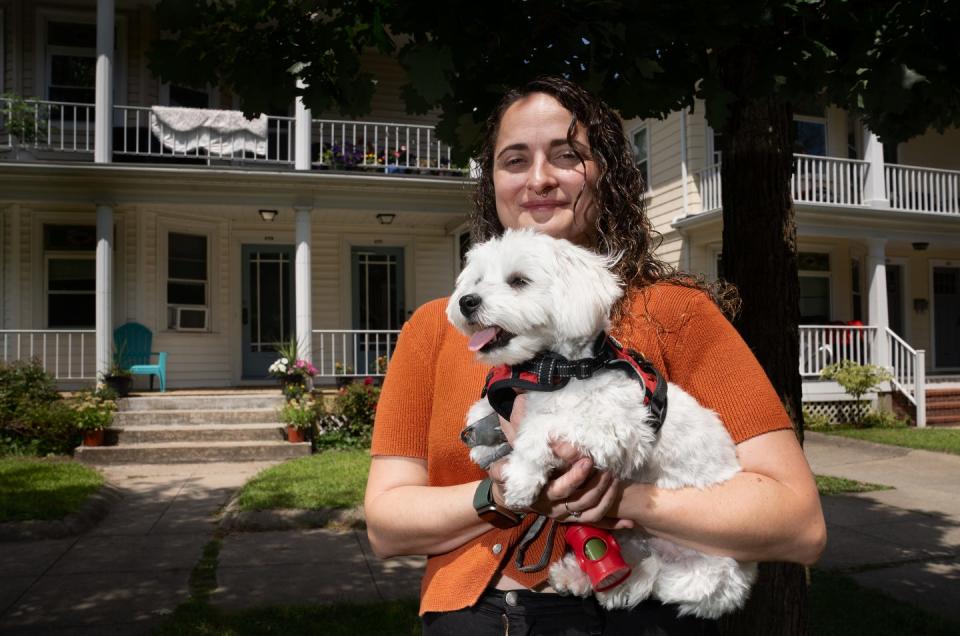
"We’re getting these much heavier, flashier, quick-dropping storms, and there’s just no time," she said. "Even if we did all those retrofits that we talked about, with these heavier storms, there’s no time to absorb it."
Why does Providence keep flooding? And what's the city doing about it?
Flooding in Providence is largely about one key measure: impervious cover. Think roofs, sidewalks, driveways, parking lots and patios – anything hard that doesn't absorb water. And as of 2020, that was nearly 65% of Providence, according to the state Department of Environmental Management.
"There is a big problem in a lot of cities in America today where we've paved over almost all the green, the trees, the grass," said David Radcliffe, deputy director of the Providence Emergency Management Agency, or PEMA, which helps guard the city against disasters. "And so at this point, the water is always going to travel in the path of least resistance, and it can't be absorbed in the concrete, so it all flows down into the drainage system."
'Long overdue': Repairs to Fox Point Hurricane Barrier are coming. What to know.
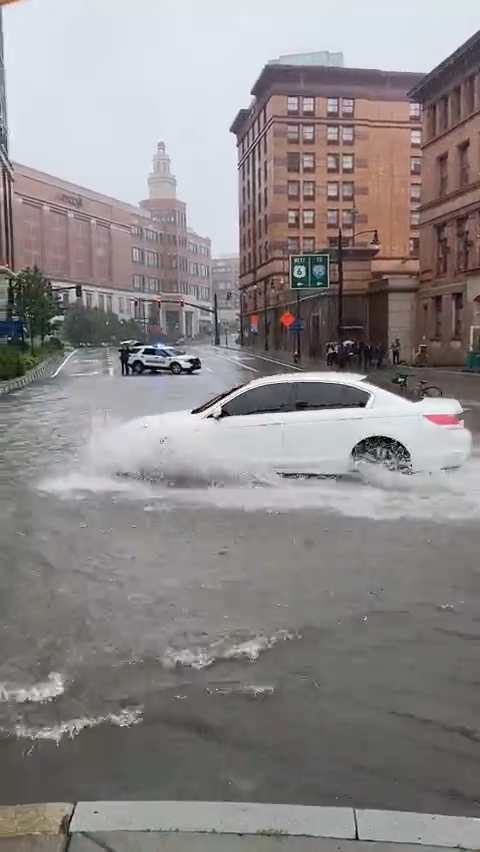
Already Providence is working on a major sewer upgrade to protect Narragansett Bay from polluted stormwater runoff, and the city is making $3 million in repairs to the Fox Point hurricane barrier, which Radcliffe said should be good until at least 2072.
But experts are still brainstorming smaller-scale neighborhood solutions. PEMA has considered strategies like taking sections of sidewalk, or areas near bike lanes, and converting them to green space with trees. That would add just a bit more absorbent surface area to the city. PEMA is also wondering whether it can get homeowners to replace asphalt driveways with permeable tiles that will allow water to flow through.
Soni Pradhanang, a professor of water resources and quality at the University of Rhode Island, believes more needs to be done, calling the city's green infrastructure "not green enough." The problem, she said, is new development.
"For Providence areas, I do feel like we need to have more green development for sure," Pradhanang said. "Space could be a big issue … but whenever new developments are coming, due concern has to be given to where will water go when it rains."
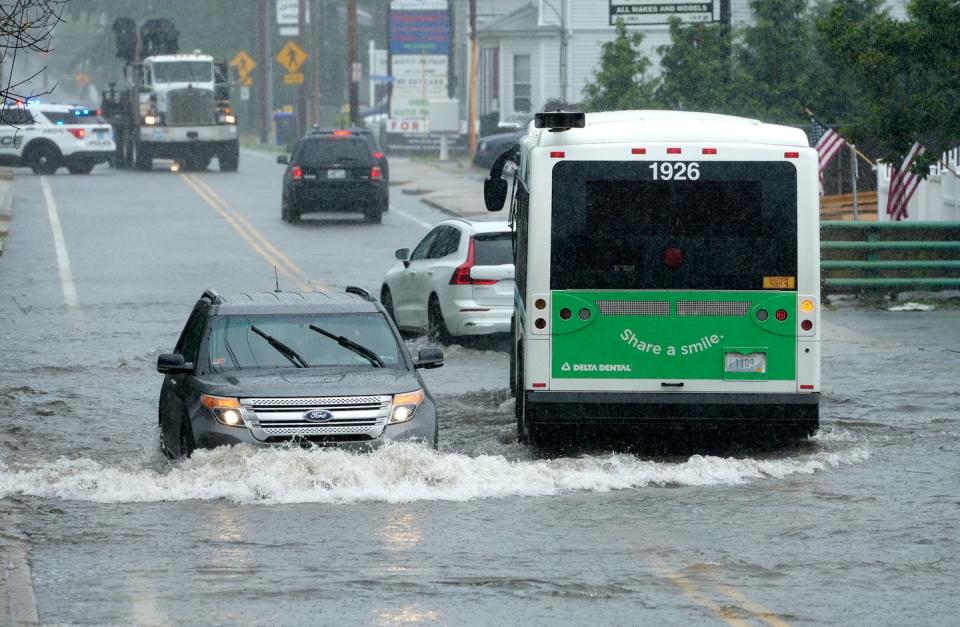
Are you a homeowner? Here's what you can do
Homeowners have a part to play in containing runoff and preventing floods. One of the cheapest options available, if you have space for it, is simply collecting rainwater in a 50-gallon container. While Rhode Island is experiencing heavy rains, last year it saw a drought. So that water could come in handy for irrigating backyards or gardens.
Another option? Put some planter boxes around your property, particularly by downspouts – the vertical drainpipes that carry water from the rain gutters to ground level. That strategy was used several years ago in Florence, South Carolina, where homeowners tried a mix of sand, topsoil and compost that absorbed some water and filtered the rest, letting it drain through a layer of rocks at the bottom.
More on climate change: The East Coast is navigating a 'Perilous Course' confronting climate change in real time
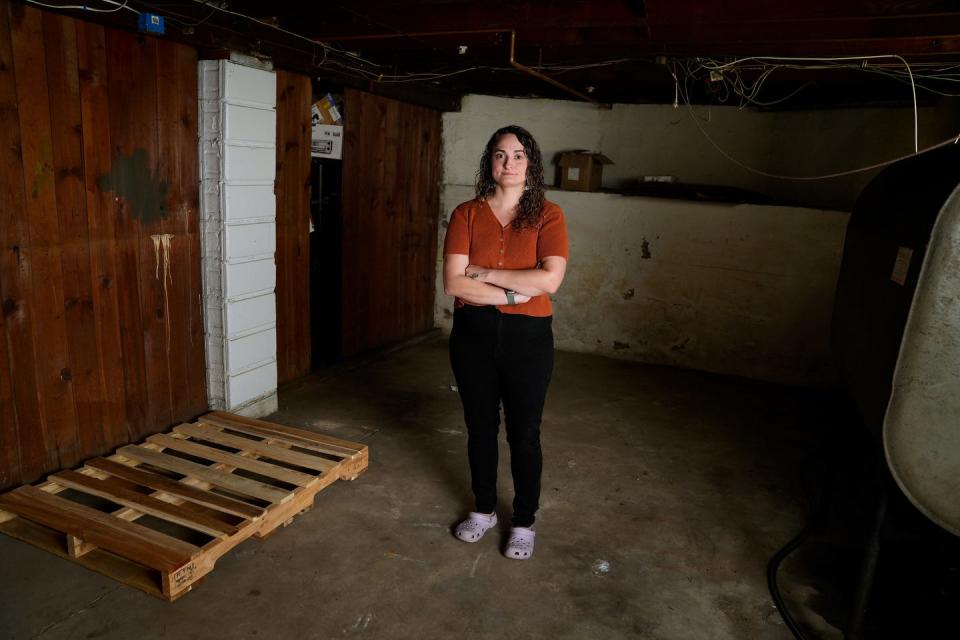
Homeowners will also want to consider where they're directing their drainpipes. Around Pleasant Valley Parkway, for example, some pipes are pointed toward the stream, some go into the stormwater system and others lead to the street – which in turn, dumps the water into the stream. The Woonasquatucket River Watershed Council has worked with homeowners to retrofit those drainpipes so they can be pointed into barrels or yards instead.
Lastly, be careful about where you dump your yard waste and other garbage to make sure it doesn't end up in the waterway.
City Councilwoman Jo-Ann Ryan, who lives on the parkway, has long been invested in helping the area stay flood-free, working to pass a local plastic bag ban that helped get some waste out of the stream. But regular cleanups have still uncovered trash and even mattresses tossed into the water.
"I’ve lived in this neighborhood all my life … as a kid I used to come here and I learned how to skip rocks … It’s special to the people who live here and live around it," Ryan reflected. "That’s why I’m so focused on being a good steward of it."
This article originally appeared on The Providence Journal: Could green infrastructure help stop Providence from flooding so often?

